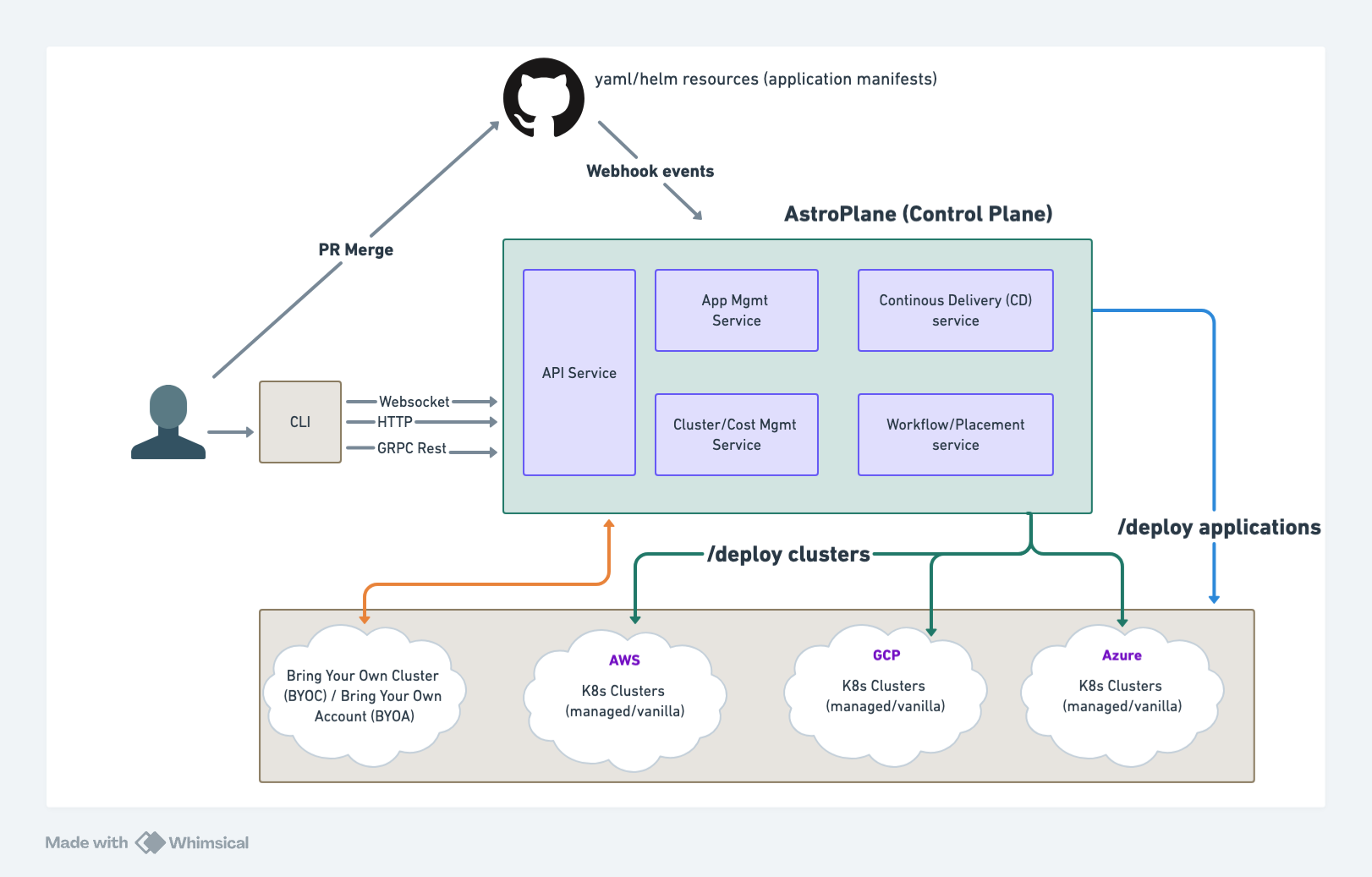Introduction
In today's complex cloud-native landscape, developers grapple with a vast array of technologies for compute, storage, and networking. AstroPulse simplifies this complexity by offering a unified and flexible platform that streamlines the deployment and management of cloud-native applications across multiple environments. Our mission is to liberate developers from deployment intricacies, enabling them to focus on their applications' business logic while we handle the infrastructure.
AstroPulse delivers a comprehensive solution that emphasizes security, resilience, and scalability. We are dedicated to transforming the deployment and management of cloud-native applications by optimizing operations, reducing costs, and improving both cluster and application management. Our approach makes cloud-native deployment simpler and more effective, revolutionizing organizational strategies towards cloud infrastructure.
Astro Plane
Astro Plane is a cutting-edge platform that revolutionizes cloud-native operations. It uniquely manages both cluster and application pipelines, offering a single pane of glass for seamless control. With the platform, organizations can optimize their infrastructure, streamline application deployment, and leverage multi-cloud environments effortlessly. Whether you're bringing your own accounts or clusters (Kubernetes), Astro Plane provides the flexibility, efficiency, and cost-effectiveness needed to thrive in today's dynamic cloud landscape.
Key Features
-
Broad Application Spectrum: Whether you are deploying a simple web app or a complex microservices architecture, AstroPulse has you covered.
-
Ease of Use: Our platform is designed with the user in mind, offering intuitive interfaces and automation to minimize manual intervention.
-
Cost-Effectiveness: By optimizing resource allocation and providing transparent pricing, we ensure that your deployments are not only efficient but also economical.
-
Seamless Migration: We facilitate smooth migration across various cloud providers, enabling you to choose the best environment for your applications without being locked into a single vendor.
-
Integrated Cloud Native Technologies: AstroPulse integrates a range of cloud native technologies to provide a cohesive and robust platform for your deployments.
-
Security and Resilience: With a strong focus on security and operational resilience, it ensures that your applications run reliably and securely.
-
Scalability: Our platform is built to scale with your needs, from small-scale applications to large enterprise solutions.
Architecture

The Astro Platform architecture, depicted in the image, highlights the core components and their interactions. At the heart of the platform is AstroPlane, a Kubernetes controller responsible for continuously monitoring running clusters and applications. This ensures that the desired state of applications, as defined in various sources such as images, Helm charts, private repositories, or YAML resources, is maintained in the git repository. AstroPulse provides users with the flexibility to register and manage satellite clusters, enhancing both flexibility and security. The platform integrates seamlessly with GitHub, using webhook events to trigger actions based on pull request merges. Users interact with AstroPlane through a CLI, which communicates via WebSocket, HTTP, or gRPC REST protocols.
The architecture supports deploying clusters and applications to various environments, including user-provided clusters or accounts (BYOC/BYOA), self-hosted Kubernetes clusters on AWS and GCP, and managed Kubernetes clusters (AWS EKS available now, GKE and AKS coming soon). This unified interface simplifies the complexities of deployment and management of cloud-native applications, allowing developers to focus on business logic while AstroPulse handles the operational intricacies.
Uses AWS Assume Role feature to connect between the accounts.
Learn more
To learn more about the platform, upcoming feature/releases, follow us on X. For tutorials visit Github
CLI reference documentation
We have a separate CLI reference documentation section that includes command line instructions and man pages.